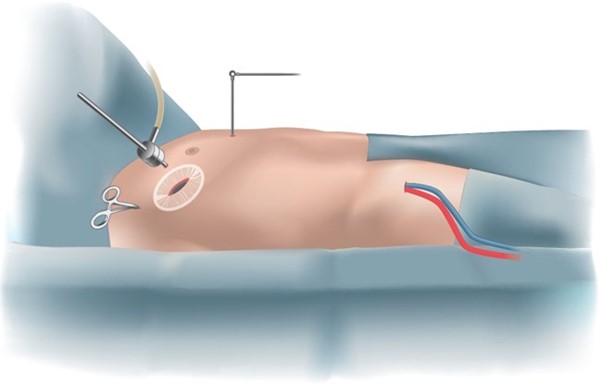Progress in ward
You will be in a room once you arrive to ward. You will be connected to monitor so nurses can see any alarming signals from your heart rhythm. You need to be careful that the wires remain attached to you body properly. If they get detached, you should inform your nurse by pressing call button. Most important thing in ward is to start getting more mobile. You will be asked to walk 5 times every day and your physio will teach you exercises. You may have some wires connected to you which will be removed in next few days. Removal of wires and lines are very tolerable. By day 5-7, you will be asked by physiotherapists to complete climbing of two flights of stairs. This is done to assess your fitness to be discharge home and your independent mobility. You will have regular blood test and chest x rays. Electrolytes are frequently replaced with intravenous infusions.
Going home
Most patients are expected to be discharge between 5-7 days after minimally invasive surgery like RAT AVR. You will receive discharge education from your nurse who will give you information about incisions, dressing, shower etc. Pharmacist will visit you to discuss your medications which might have changed a little bit. You must remember to take discharge file with you that should include all your instructions regarding follow up appointments, medication list and other material. You should carry this file with you when you visit your cardiologist or cardiac surgeon for follow up at 4-6 weeks
Dressings
You will have a small dressing on chest and one on the groin. You should remove it at 4 weeks under running shower. You can remove it earlier it starts to come off or breaks. If you have any concerns about wound please visit your GP or notify Dr Joshi.
Follow up
you should arrange an appointment to see Dr Joshi in 6-8 weeks and your cardiologist in 8 weeks. You should visit your GP withing a week after being discharged from hospital
Advantages of minimally invasive approach :
Some of the advantages of minimally invasive approach is reduced blood loss, shorter hospital stay and earlier return to activity. The breastbone(sternum) is kept intact which allows early resumption of activities like lifting weight or driving.
- Cosmetic – incision is small and in some patients barely visible
- Early recovery and return to activities
- Future reoperations on heart are less complicated if you need one
- Less blood loss, shorter ICU and hospital stay
Pictures :
Complications:
Generally considered a low risk operation despite complexity associated with it. In the absence of major medical problems most patients have 1% or less risk of death or major complications. Most important complications to keep in mind is risk of bleeding and stroke. Post operative bleeding is due to requirement of delicate suturing in high pressured part of the heart and stroke can result from any debris including blood clots blocking one the vessels in the brain. The incidence of bleeding and stroke is expected to be around 1% and if the risks are higher it will be pointed out at the time of consultation.
One of the important non major complication with this surgery is a risk of permanent pacemaker (PPM) which is about 1%. If your electrical system does not recover within a week than Mr Joshi will ask cardiologist to insert a PPM under local anaesthetic prior to your discharge from hospital. Insertion of PPM does not hold you long in hospital nor affects your recovery adversely. It is quite common to develop irregular heart beat (30%). This is treated with medications to good effect.
Younger patients are a risk of developing fluid build up around the heart. This typically manifests at about 4 weeks. This is reactive fluid and younger patients are more prone. It is not harmful but can make some patients feel short of breath or feverish. If that happens you should present to ED or notify your cardiologist or Mr Joshi. The treatment involves anti inflammatory medications and in some cases taking the fluid out with needle or small incision.
Chest wall hernia is one of the uncommon complication of this approach in which a part of lung can protrude between your ribs at the site of incision. This is not a major complication but may need surgery in some patients.
Phrenic nerve injury is a very uncommon complication. Phrenic nerve is a nerve that supplies to breathing muscle on the right side of the lung. There is a possibility of its blood supply being damaged or injury to nerve itself due to indirect traction during heart surgery.






